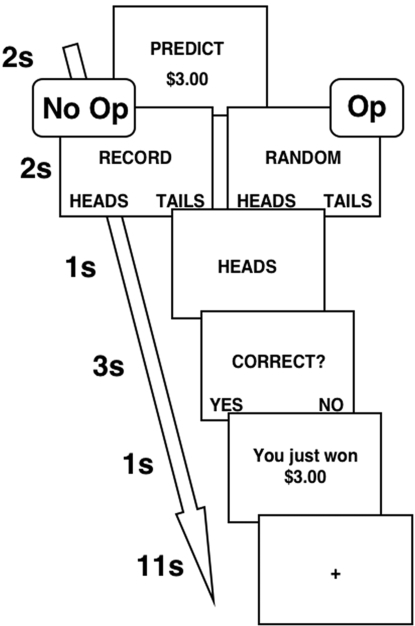Fig. 1.
Task sequence: The subject (1) observes the trial's monetary value and privately predicts the outcome of the upcoming coin flip, (2) records this prediction by pressing 1 of 2 buttons (No Opportunity condition) or presses one of these buttons randomly (Opportunity condition), (3) observes the outcome of the coin flip, (4) indicates whether the prediction was accurate, (5) observes the amount of money won/lost based on the recorded prediction (No Opportunity) or the reported accuracy (Opportunity), and (6) waits for the next trial. Op, opportunity. Button presses in response to screen 2 in the Opportunity condition and screen 4 in the No Opportunity condition control for motor activity.

